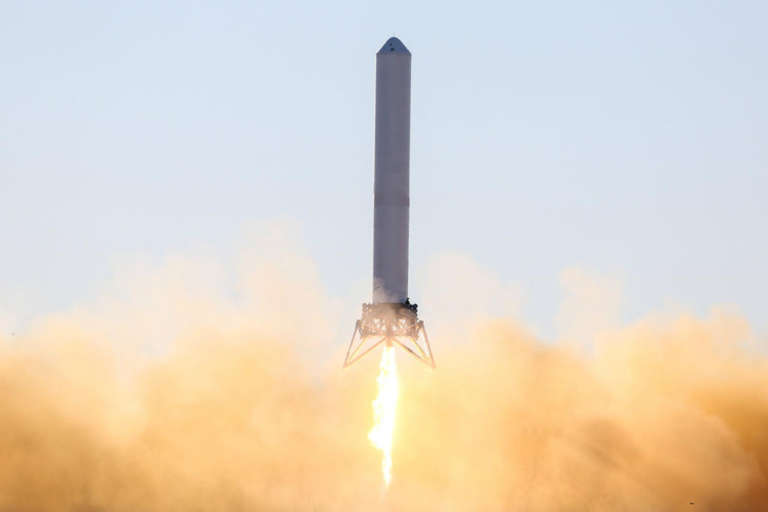Jason Davis • Dec 26, 2012
SpaceX's Grasshopper makes leap toward reusability
SpaceX's Grasshopper rocket passed its most ambitious test yet with flying colors last week, rising 12 stories into a cloudless Texas sky before hovering and settling gently back down onto its launch pad. It was the third flight of the prototype launch vehicle, which SpaceX hopes will lead the company to spaceflight's holy grail: a fully-reusable rocket system.
While SpaceX did not post a press release for the December 17 flight, details provided in a YouTube video said the Grasshopper left the ground for 29 seconds and reached an altitude of 131 feet (40 meters). The test vehicle is a modified Falcon 9 first stage powered by a single Merlin 1D engine, an upgraded version of the 1C engines that have launched two successful Dragon capsule cargo runs to the International Space Station. The production reusable Falcon 9 will have nine Merlin 1D engines, but only the center will be used during landing.
Elon Musk tweeted a few pictures from the flight, pointing out a six-foot cowboy mannequin that his team had installed on the base of the rocket to provide a sense of scale.
"Cowboy riding the rocket no problemo," he said in one tweet.

The Falcon 9 currently sheds its first stage three minutes into flight. Like other expendable rocket stages, the spent canister and its engines tumble back to Earth, ultimately meeting their demise in the Atlantic Ocean. However, as shown in a video released by SpaceX last year, the reusable Falcon's first and second stages will fly back to Earth for powered, upright landings. While the video is not necessarily accurate in every technical detail, it provides an overview of how SpaceX intends to accomplish the task.
In order to figure out exactly how the first stage will turn around and head home to Cape Canaveral, we need a lot of data from SpaceX, including Falcon's velocity, altitude and downrange distance at stage separation. The overall concept, however, is fairly straightforward: the first stage will kill off its eastward velocity and start traveling westward as it falls back to Earth. It will turn upright and slow down for a graceful soft landing.
Since a lot of the rocket's liftoff thrust is used to raise the rocket vertically, moving an almost-empty fuel tank laterally through near-vacuum seems doable. However, I'd love to get all of the numbers from SpaceX at some point and have someone with the necessary math skills explain how it will work.


 Explore Worlds
Explore Worlds Find Life
Find Life Defend Earth
Defend Earth

